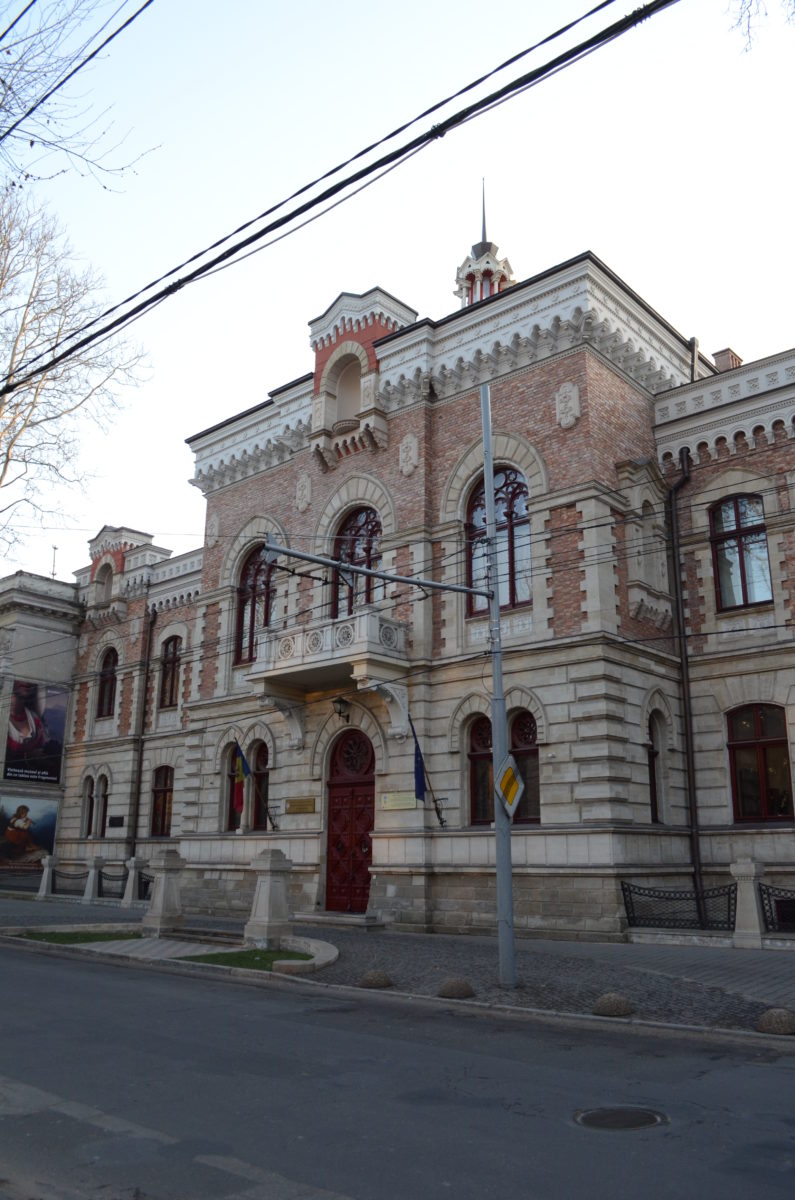Standing in front of the National Art Museum, you will notice a sign on the right building. Next to the entrance to the restaurant, it refers to the Liceul Principesa Natalia Dadiani. However, the girls’ high school mentioned was not in this building, but in the central building in which the National Art Museum is located today. Historical photographs document the detached building of the Liceul Dadiani; the two-story additions on the left and right were made much later.
The building was erected in 1901 as a girls’ high school, according to the plans of the architect Alexander Bernardazzi. He created numerous magnificent buildings in Chişinău. The school was the second private girls’ high school to offer eight years of education. It was named after its director, Natalia Godlevskaya, who married and became Princess Dadiani. She was also instrumental in financing the luxurious new building.
School graduates included many Jewish girls, including Ida Voliovich, who was born in Chişinău in 1920. In her interview with Centropa, she remembered her school days:
When my father died, I realized that I had to get a good education – I was responsible for my mother. I decided to enter the Romanian highschool, the so-called Princess Natalia Dadiani’s Lyceum. Princess Dadiani was a Russian lady from Bendery, a Moldovan town. She became a Princess after marrying a Georgian Prince. […] She decided to open a state-run Russian high school and invited well-known architects to build this school, which houses the Museum of Arts today. Princess Dadiani died at the age of 38 in 1903, but the school named after her prospered. It was a Russian school before it became a Romanian school in 1919. The Russian teachers, who had a command of the Romanian language continued to work. The director was Raisa Galina, a Russian lady.
I passed exams for the fourth grade and was admitted to the fourth grade of the gymnasium. I submitted the so-called ‘certificate of poverty,’ confirming that I was an orphan, to obtain exemption from tuition fees. Jewish girls constituted almost half of the class and I made lifelong friends there. We wore uniforms: black robes with collars and the letters LPD – Princess Dadiani Lyceum and our numbers embroidered on them.
In those years Bessarabia was rapidly switching to the Romanian language in all spheres of life. My mother tongue was Russian and I communicated with other girls in Russian. However, I also understood Yiddish, since my mama and father spoke Yiddish. I also knew Romanian. There were notes ‘Speak Romanian’ in public places, state offices, big stores, markets or in the streets. Once, my friend […] and I spoke Russian, when we left the school. A teacher was passing by. He didn’t say anything to us, but on the following day our headmistress Raisa Galina suspended us from school for a week. We were happy – we had a whole week for doing nothing and reading our favorite books.
The building was damaged during World War II. After the overhaul, it served as the headquarters of the Central Committee of the Communist Party of the Soviet Socialist Republic of Moldova until 1964. In the 1970s, a two-story extension was added to the building on the right, symmetrical to the existing left one. Today the National Art Museum is located in the historic building.
